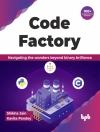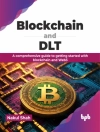Prolog has a declarative style. A predicate definition includes both the input and output parameters, and it allows a programmer to define a desired result without being concerned about the detailed instructions of how it is to be computed. Such a declarative language offers a solution to the software crisis, because it is shorter and more concise, more powerful and understandable than present-day languages. Logic highlights novel aspects of programming, namely using the same program to compute a relation and its inverse, and supporting deductive retrieval of informa- tion. This is a book about using Prolog. Its real point is the examples introduced from Chapter 3 onwards, and so a Prolog programmer does not need to read Chapters 1 and 2, which are oriented more to teachers and to students, respec- tively. The book is recommended for introductory and advanced university courses, where students may need to remember the basics about logic program- ming and Prolog, before starting doing. Chapters 1 and 2 were also kept for the sake of unity of the whole material. In Chapter 1 a teaching strategy is explained based on the key concepts of Pro- log which are novel aspects of programming. Prolog is enhanced as a computer programming language used for solving problems that involve objects and the relationships between objects. This chapter provides a pedagogical tour of pre- scriptions for the organization of Prolog programs, by pointing out the main draw- backs novices may encounter.
Helder Coelho & Jose C. Cotta
Prolog by Example [PDF ebook]
How to Learn, Teach and Use It
Prolog by Example [PDF ebook]
How to Learn, Teach and Use It
Buy this ebook and get 1 more FREE!
Language English ● Format PDF ● ISBN 9783642832130 ● Publisher Springer Berlin Heidelberg ● Published 2012 ● Downloadable 3 times ● Currency EUR ● ID 6334586 ● Copy protection Adobe DRM
Requires a DRM capable ebook reader












